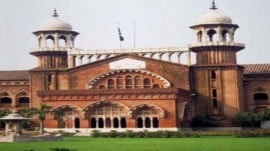
The second controversy is that the western route that goes through K-P and Balochistan only comprises a single road that lacks the perks of energy projects or industrial zones. Again, this myth has been hovering around without any legs. The reality is that Sindh and Balochistan have the highest share of energy projects, followed by Punjab and K-P. And this is all available on the Planning Commission’s webpage.
The third controversy is that the PML-N is undertaking the CPEC project to fill its pockets. This is a typical political smear campaign. Most projects are being done in the IPP mode, and just to ensure that the money is going in the right place, China is managing the finances and operations directly, as highlighted to me by a senior Chinese official in Australia.
The fourth and only plausible controversy that makes any sense and has escalated the situation is that the PML-N is conducting the project without taking other provinces and political parties on-board in the decision-making process. But the reasons behind the PML-N doing what it is doing may centre less around stripping Balochistan or K-P of their rights, and more about its management style. Its style of governance and development is extremely centralised and steered by a few key individuals who often bypass bureaucratic hurdles and deliver things at a pace unseen before — Lahore being a good example. While the model worked in Punjab, it appears that the PML-N couldn’t transition this model to the federal level. While the CPEC has been the subject of debate in parliament and in APCs, there wasn’t a broader buy-in and inclusivity vis-a-vis the project in its early stages. Perhaps because most of the negotiations were underway during the dharna period, the political parties didn’t see it passing right under their noses. The PTI actually rejected several invitations to be part of the negotiations.
Nevertheless, the sooner the PML-N realises the need for it to change its decision-making and operational strategy, the stronger it will be at the federal level and in a better position to deliver on mega projects like the CPEC. At the same time, it is also apparent that a particular political spin is being played over the CPEC, with fake maps, agreements and details of the project going viral, all sourced back to suspicious Facebook pages that promote provincial tensions and anti-Punjab sentiment. The CPEC can be Pakistan’s platform for economic growth, and given the political maturity in the country, I am optimistic that any controversy could be resolved through negotiations and parliamentary debate. But there is a need across the provinces to reject politicising of the issue or cultivating anti-Punjab sentiment for petty political gain. The project must be carried forward, and with more oversight, accountability and unity. But let’s try not to mutually damage ourselves over an issue that can be easily resolved.
Published in The Express Tribune, January 16th, 2016.
Like Opinion & Editorial on Facebook, follow @ETOpEd on Twitter to receive all updates on all our daily pieces.










































COMMENTS (8)
Comments are moderated and generally will be posted if they are on-topic and not abusive.
For more information, please see our Comments FAQ